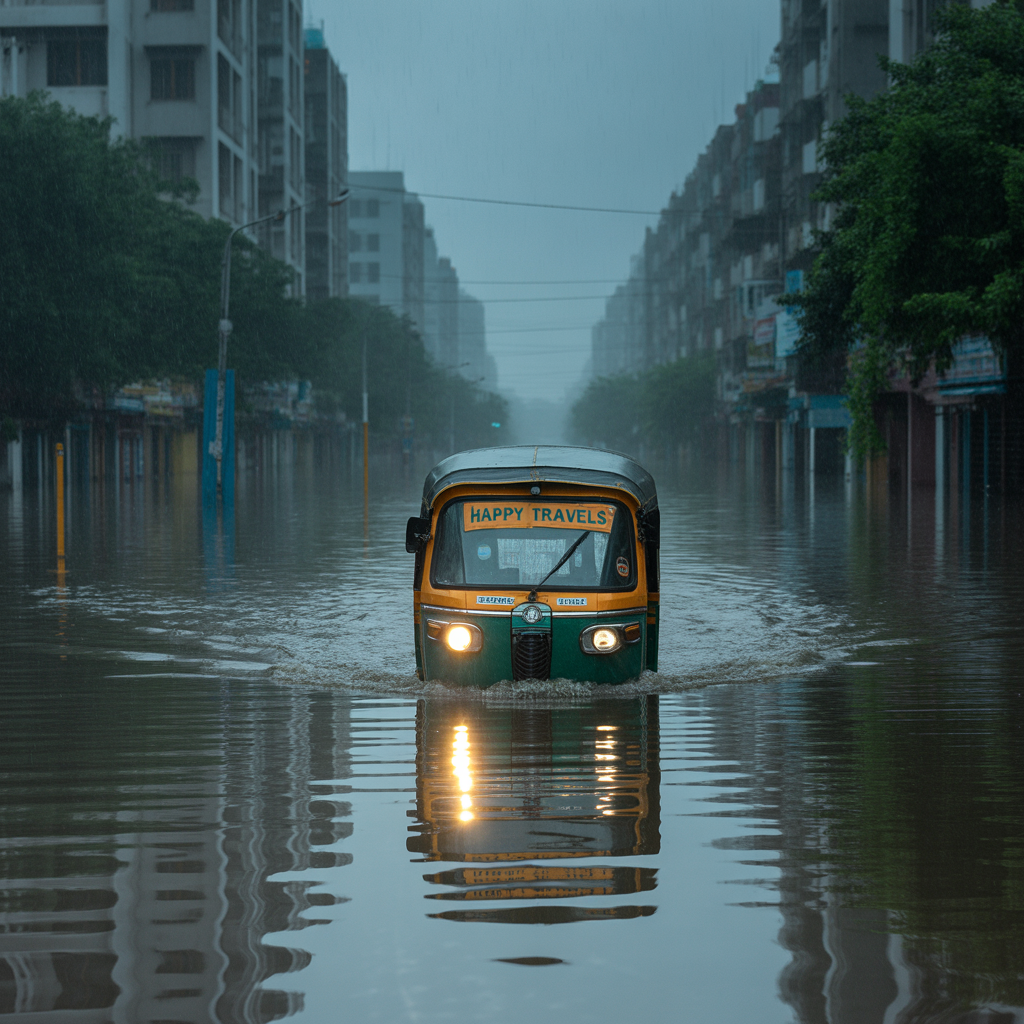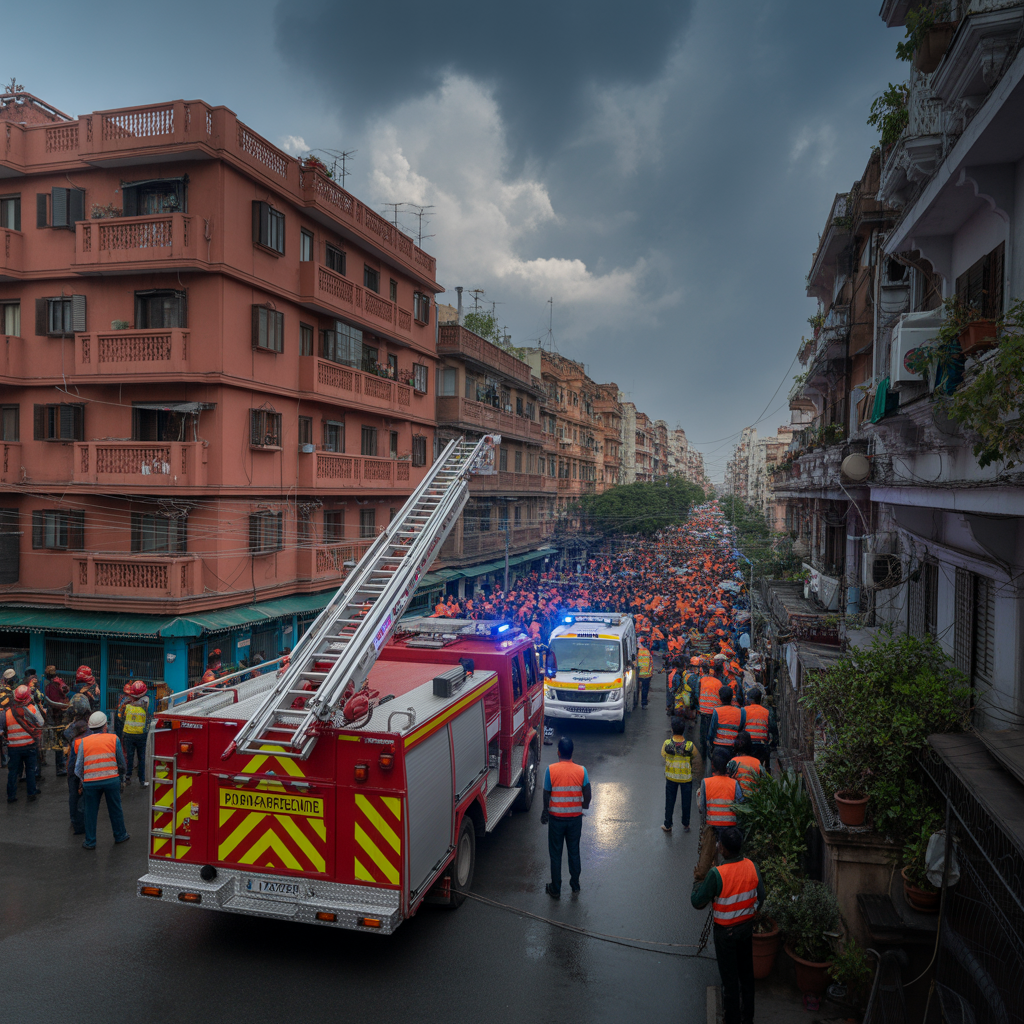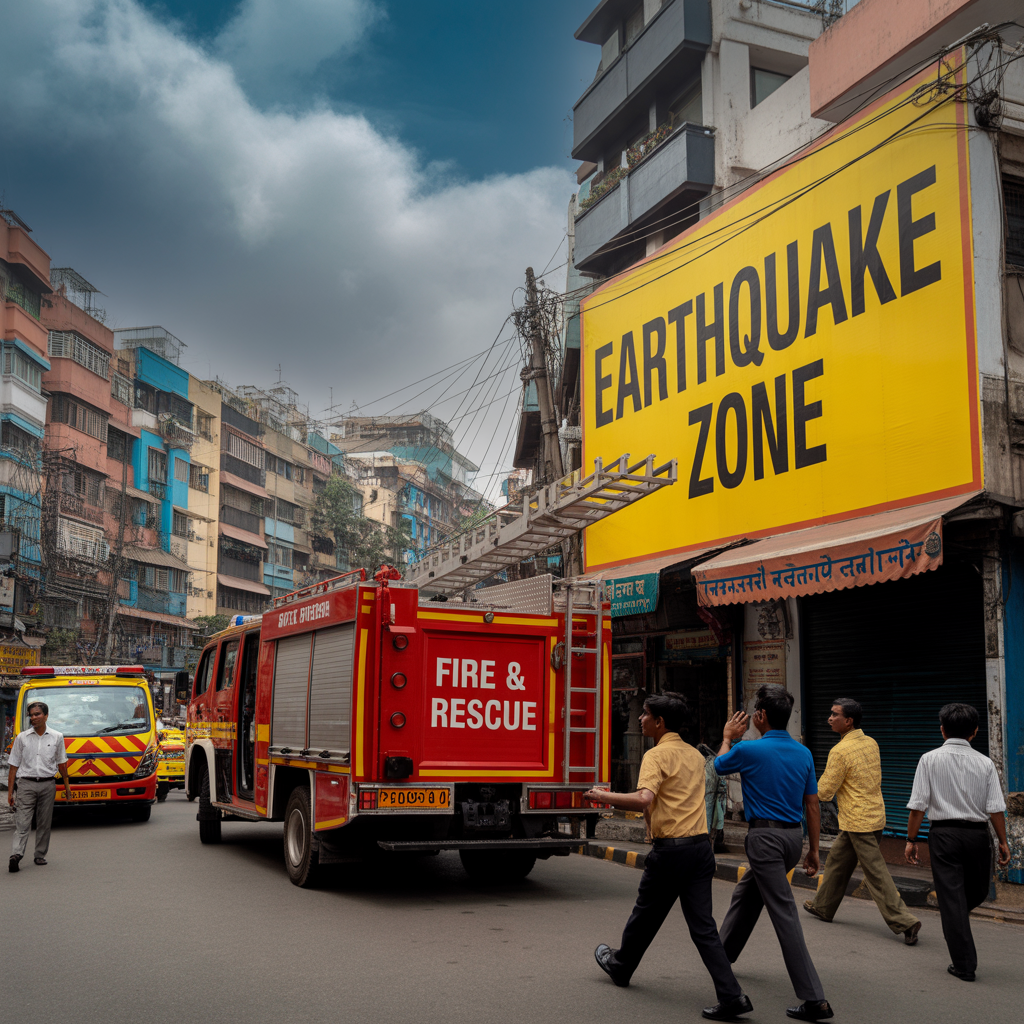Disaster preparedness in Indian cities has become increasingly critical as urban populations grow and the risk of natural calamities escalates. With over 35% of India’s population now residing in urban areas, cities face compounded risks from natural hazards such as floods, earthquakes, cyclones, and fires. Despite several policy initiatives and technological advances, urban disaster readiness in India still faces several hurdles.
Understanding Urban Disaster Risks in India

Urban India is vulnerable to multiple hazards:
- Earthquakes: Cities like Delhi, Guwahati, and Patna lie in high seismic zones.
- Floods: Mumbai, Chennai, and Bengaluru frequently face urban flooding during monsoons.
- Cyclones: Coastal cities like Visakhapatnam and Kolkata regularly experience cyclonic storms.
- Fires and Industrial Accidents: Dense housing and outdated infrastructure raise fire risks.
According to the NDMA, these risks are amplified by poor planning, informal settlements, and inadequate emergency response infrastructure.
Key Government Initiatives Supporting Disaster Preparedness
1. National Disaster Management Authority (NDMA)
Established under the Disaster Management Act, 2005, NDMA coordinates national disaster policies, issues guidelines for urban risk management, and promotes infrastructure resilience.
2. Smart Cities Mission
Launched in 2015, this initiative integrates disaster resilience into urban planning. It promotes real-time monitoring systems, GIS-based hazard mapping, and quick-response services.
3. City Disaster Management Plans (CDMPs)
Urban Local Bodies (ULBs) are mandated to prepare CDMPs including risk assessments, response frameworks, evacuation protocols, and communication systems.
4. India Meteorological Department (IMD)
The IMD plays a key role in issuing early warnings for cyclones and heavy rainfall, allowing timely evacuation and disaster response.
Core Components of Urban Disaster Preparedness

Hazard and Vulnerability Mapping
Cities use Geographic Information Systems (GIS) to identify flood zones, seismic vulnerabilities, and fire-prone areas. For example, the Delhi Master Plan incorporates seismic risk zones to guide construction.
Strict Enforcement of Building Codes
The Bureau of Indian Standards (BIS) has laid out earthquake-resistant codes like IS 1893 and IS 13920, but enforcement remains inconsistent, especially in informal housing areas.
Community-Based Disaster Risk Reduction (CBDRR)
Engaging residents through awareness programs, evacuation drills, and first-aid training empowers communities to respond better during emergencies.
Upgrading Emergency Infrastructure
Cities are investing in fire stations, flood shelters, control rooms, and rescue equipment. Yet, many still lack adequate manpower and maintenance budgets.
Challenges to Disaster Preparedness in Indian Cities

1. Inadequate Resources
Smaller cities and municipalities often lack funding, training, and disaster management equipment. As a result, implementation of preparedness plans remains superficial.
2. Rapid Urbanization
Uncontrolled expansion and unregulated construction in high-risk zones continue, especially in floodplains and coastal areas.
3. Coordination Gaps
Disaster response involves multiple agencies—from municipal bodies to police, health services, and civil defense. Coordination failures can delay rescue efforts.
4. Lack of Public Participation
Citizens often remain unaware of disaster plans. Without regular drills or public training, community resilience remains low.
Success Stories and Learnings
Chennai Floods (2015)
The floods caused major urban disruption but prompted major reforms. Chennai now uses real-time flood sensors and automated water level monitoring to issue early warnings.
Bhubaneswar – A Resilient City
Bhubaneswar, part of the UNDRR’s Making Cities Resilient Campaign, has developed inclusive and climate-resilient urban plans that prioritize risk reduction and citizen participation.
Ahmedabad Heat Action Plan
As the first city in South Asia with a heatwave action plan, Ahmedabad’s success shows how cities can prepare for and mitigate climate-induced disasters.
The Way Forward
✅ Integrate Technology
Cities must adopt AI-based flood prediction, mobile alerts, and drones for real-time damage assessment and response coordination.
✅ Inclusive and Climate-Resilient Planning
Urban planning should consider climate change projections and include marginalized groups who are most at risk during disasters.
✅ Capacity Building at the Local Level
Investing in training for municipal staff, volunteers, and emergency workers is essential for rapid response and recovery.
✅ Public Awareness Campaigns
Regular communication through schools, RWAs, media, and mobile apps can improve citizens’ preparedness and reduce panic.
Conclusion
Disaster preparedness in Indian cities is no longer optional—it is a necessity. As urban populations grow and climate change worsens risk factors, cities must evolve into resilient systems that protect lives, infrastructure, and livelihoods. While progress has been made, a coordinated effort involving governments, communities, and technology will be the cornerstone of a safer urban future.
For more insights on disaster management policies, visit NDMA.gov.in or SmartCities.gov.in.




